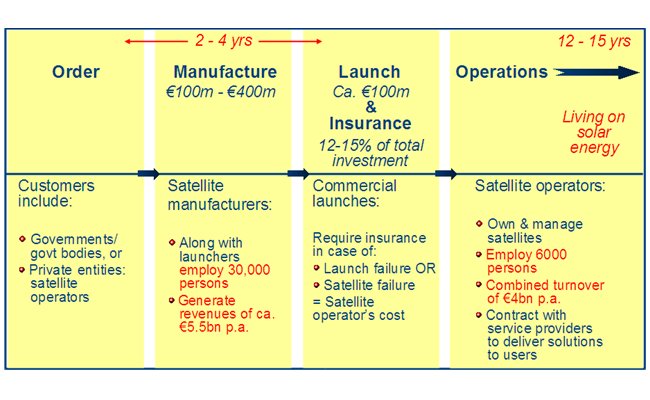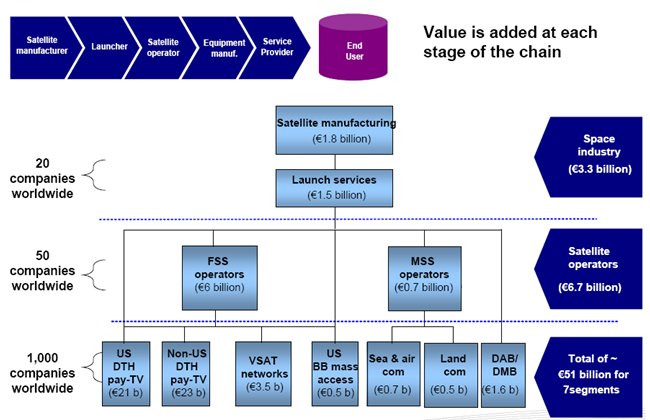Economics of Satellites
Did you know?
Every €1 of public funding invested in Satellite Communications technology generates a downstream return of €47.
Satellite telecommunication is the most mature of space applications & represents the commercialisation of space. Starting almost 50 years ago, with the launch of the first telecommunications satellites (Telstar in 1962 and Syncom in 1963), satcom has continued to grow ever since.
Building, launching and operating a satellite is a long-term investment, bringing long-term benefits and generating downstream value with a multiplier effect, generating a return many times the initial investment.

Public funding underpins leading edge Research and Development in Europe and helps to ensure that Europe’s Space Industry remains competitive. In this context, annual orders of telecommunications satellites have enabled the European satellite & launcher industry to retain a market share of about 40% of the space segment market despite serious competition from other parts of the world, including the US, China & India.
 Satellite telecommunications constitutes 60% of space industry activity. Nine out of ten satellites launched by Ariane 4 and Ariane 5 are telecommunication satellites. The market for satellite communications has been expanding at a substantial rate - more than 5–6% per year. Today, more than 250 satellites provide more than 20 000 television programmes from geostationary orbit and around 148 of them are European operated by ESOA members.
Satellite telecommunications constitutes 60% of space industry activity. Nine out of ten satellites launched by Ariane 4 and Ariane 5 are telecommunication satellites. The market for satellite communications has been expanding at a substantial rate - more than 5–6% per year. Today, more than 250 satellites provide more than 20 000 television programmes from geostationary orbit and around 148 of them are European operated by ESOA members.
Millions of sites are connected by satellite using small interactive terminals. When launchers, user terminals and specially derived services are taken into account, satcom’s market value can be approximated at €100 billion. European industry and European satellite operators are at the forefront of this huge international market.
With stable and established business models in core sectors such as television or maritime communications, satellite operators continue to expand and replenish their, often global, fleets with new satellites. The economics of the satellite market (including the associated supply chain) supports the Lisbon Objective of building Europe into the leading knowledge economy, which is echoed in the EU 2020 strategy.